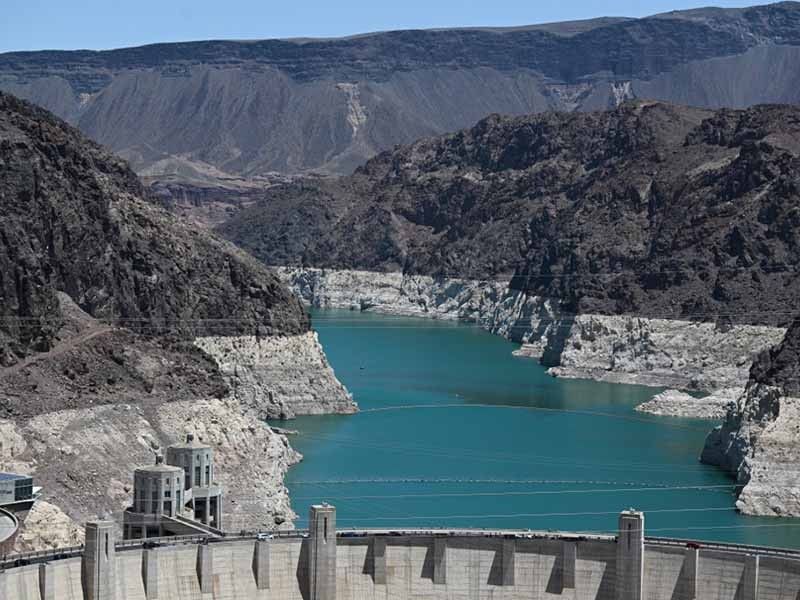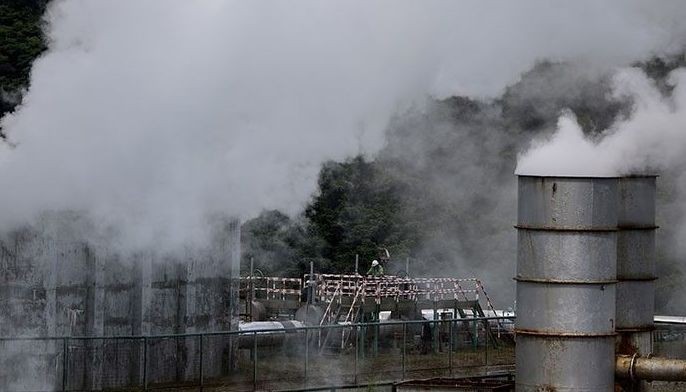US states reach agreement to save dwindling Colorado River

LOS ANGELES, United States — Western US states said Monday they have reached an agreement to cut the amount of water they take from the dwindling Colorado River, which is threatened by a quarter of a century of drought and worsening climate conditions.
The plan comes after years of bitter wrangling, with states refusing to give ground even as the water course has reached crisis point, threatening drinking water supplies for 40 million people and imperiling electricity generation across the American West.
Under the proposal, the federal government will pay a reported $1.2 billion to water districts, Native American Tribes and cities in California, Nevada and Arizona to use less water over the next three years.
The states themselves will also cut their use, though they will not be compensated.
The reductions will reduce the amount of water taken from the once-mighty Colorado by 3 million acre-feet, or about 13% of all the water it supplies.
An acre-foot refers to an acre covered in water a foot deep — around 326,000 gallons (1.23 million liters) or about half an Olympic-size swimming pool.
"The entire Western United States is on the frontlines of climate change — we must work together to address this crisis and the weather extremes between drought and flood," California Gov. Gavin Newsom said in a release welcoming the agreement.
"California has stepped up to make significant cuts to water usage and now, this historic partnership between California and other Lower Basin states will help maintain critical water supply for millions of Americans as we work together to ensure the long-term sustainability of the Colorado River System for decades to come."
US President Joe Biden hailed the agreement as "an important step forward in our efforts to protect the stability of the Colorado River System in the face of climate change and historic drought conditions."
Deadpool
The Colorado River runs through seven US states and Mexico, supplying drinking water and hydropower, and irrigating some of the country's most fertile farmland.
But what was one of the world's great rivers has now shrunk.
Human-caused climate change means the once-bountiful snowpack that feeds the river has dwindled.
What snow there is melts more quickly because of higher temperatures, and more is lost to evaporation.
Use of the river water is subject to a more than century-old agreement, made when it rained more and fewer people depended on the waterway.
But the agreement was always something of a fiddle — a politically expedient fix that allowed users to take more water than was added every year.
For years the states and the federal government have been deadlocked on how to square this circle and equitably divvy up the shrinking supply, even as the region has become more arid and river levels have dropped.
Last year Lake Powell and Lake Mead — two of the largest reservoirs in the country — fell to historic lows, with fears that they might even drop below intake pipes at the Hoover Dam, a situation known as "deadpool," which would halt hydro-electric production and stop the river flowing.
The Bureau of Reclamation, the federal government department that manages water resources, threatened last month to impose mandatory cuts that would see Arizona, California and Nevada hit with a uniform percentage reduction.
That proposal angered farmers in the south of California who take the lion's share of the state's allocation, an amount equivalent to everything extracted by Arizona and Nevada combined.
Details on the proposal announced Monday were scant.
The federal money will come from the Inflation Reduction Act, a piece of mega-legislation crafted by Biden's administration that provides huge sums of money for environmental initiatives.
That cash will be used to pay users to take around 2.3 million acre-feet less of water.
The remaining 700,000 acre-feet to be saved will come from the states, but exactly how that reduction will be achieved — and who will bear the biggest burden — was not immediately clear.
The proposal runs through 2026, and does not include any reduction in use by Colorado, New Mexico, Utah and Wyoming, which also take water from the river.
Scientists say a wet winter in the US west has alleviated some pressure on the system, but this is only a temporary reprieve as human-caused climate change continues to exacerbate a long-term drying trend in the region.
- Latest































